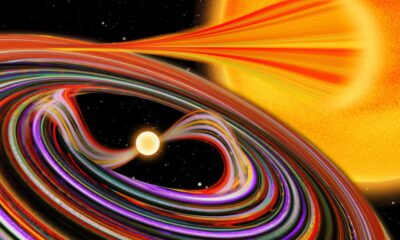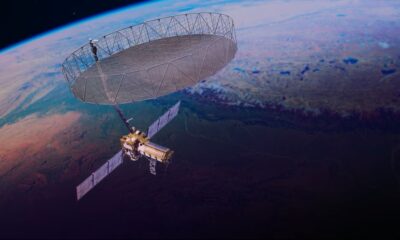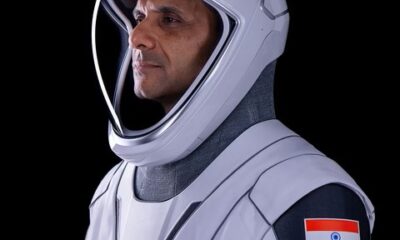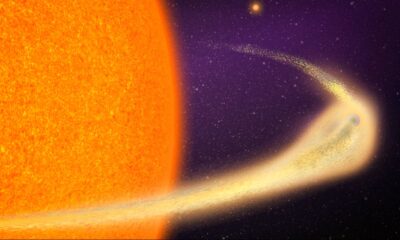Space & Physics
Surgeons perform ‘surgery’ in space virtually with a robot
The robot surgeon, spaceMIRA, did a surgery on a simulated tissue made of rubber bands but operated virtually from mainland US.
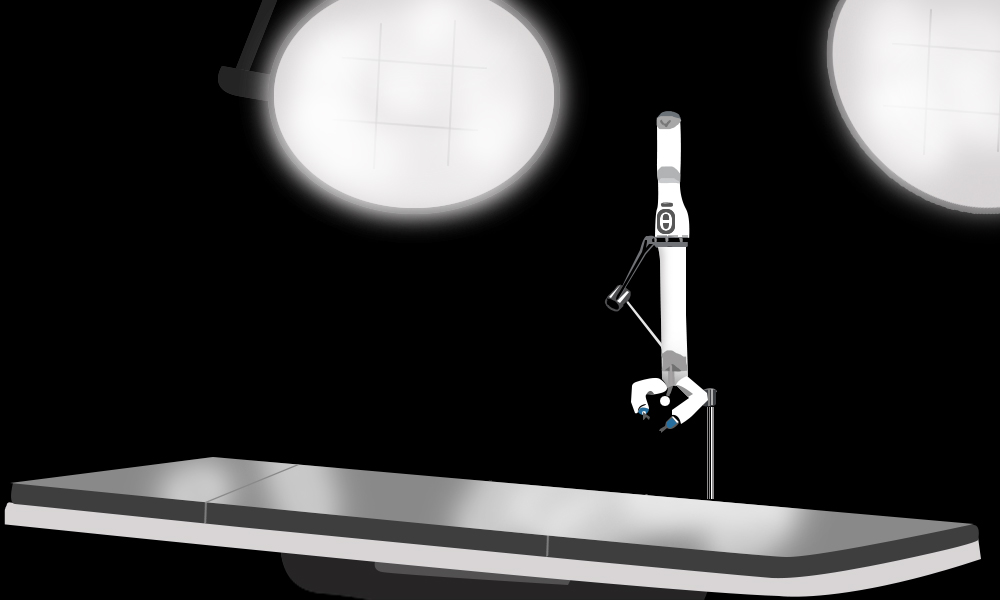
Virtual Incision’s spaceMIRA robot performed a simulated surgery aboard the International Space Station (ISS). The operation was deemed a success by surgeons virtually operating the robot from Nebraska, in the US. MIRA is an acronym for ‘Miniaturized in vivo Robotic Assistant’.
The robot surgeon, weighing 0.9 kg, can prove useful if NASA launches long-duration spaceflights, say a trip to Mars. Over 6 surgeons completed a series of tests, getting spaceMIRA to slice tissues with precision.
CNN reported it as a ‘microwave’ sized box, designed to be lighter to reduce load on the spacecraft, operating in a zero gravity environment. The robot has two arms – one to perform incisions, and the second to provide tension forces.
“It gives smaller hands and eyes to the surgeon (on Earth) and allows them to perform a lot of procedures minimally invasive,” said Shane Farritor, the co-founder and Chief Technical Officer (CTO) of Virtual Incision, and a professor in mechanical engineering at the University of Nebraska.
However, operating virtually from Nebraska to the ISS meant there were signal delays of around 0.85 seconds. This wasn’t a problem for the planned simulated surgery, although this ‘was a big challenge,’ according to Dr Michael Jobst, a colorectal surgeon part of the spaceMIRA demonstration. He had prior experience using the terrestrial version of spaceMIRA – dubbed terrestrial MIRA – in 15 surgeries on human patients.
MIRA wasn’t designed to just operate in space, for the robot surgeon can do telesurgery in battlefields or even rural areas, according to a University of Nebraska release. spaceMIRA was shuttled to the ISS by SpaceX’s Falcon 9 on January 30th, 2024. “NASA wants to go further, and the long duration spaceflight will place new demands on medical care in a lot of ways,” said Farritor. spaceMIRA is planned to return back to earth by June.
Space & Physics
A Zombie Star 200 Light Years Away Is Feeding — and MIT Saw the X-Rays
New observations reveal a towering column of superheated gas and confirm long-suspected features of a rare “intermediate polar” system.
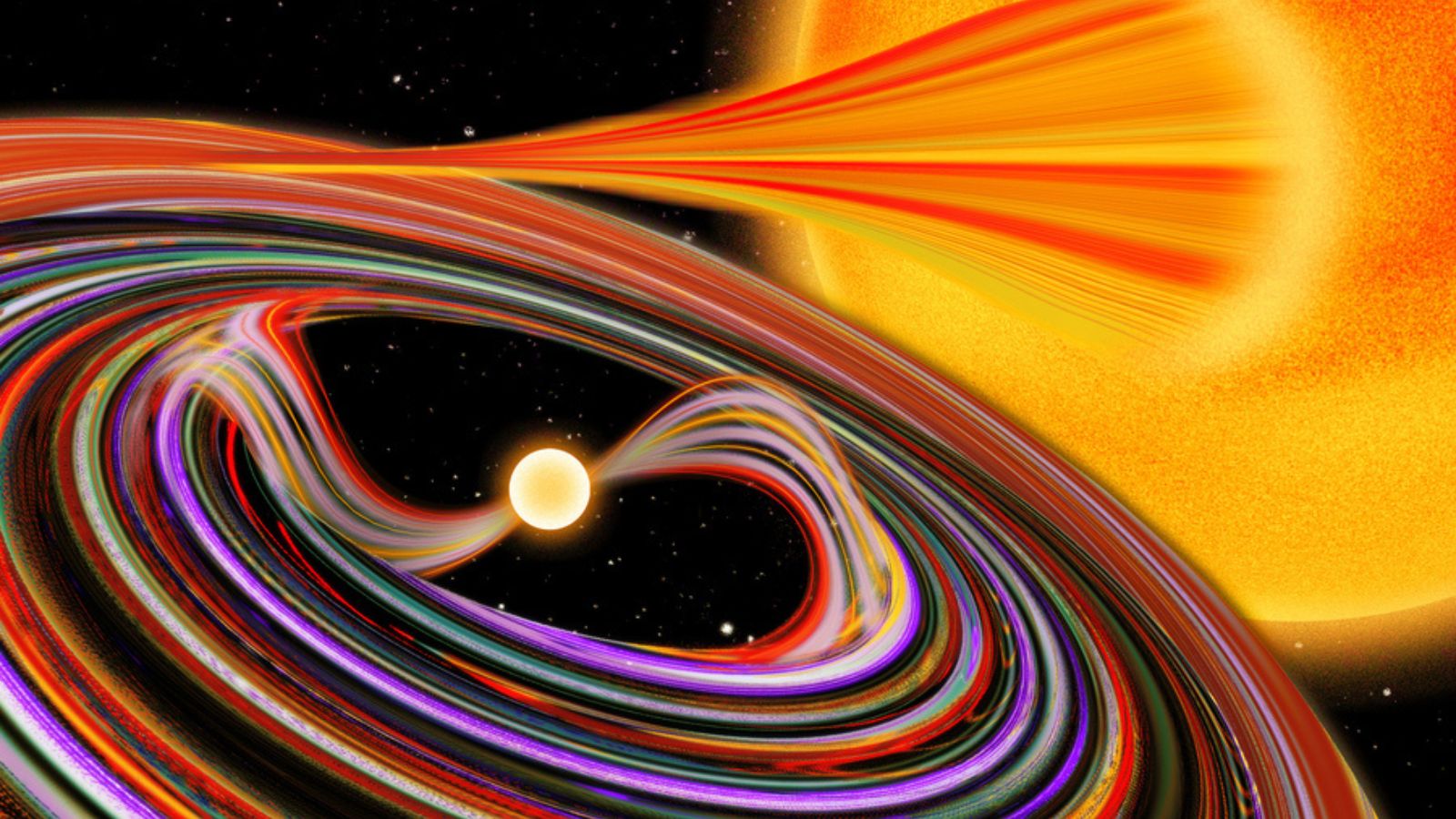
Far beyond the reach of visible light, a faint stellar remnant about 200 light years from Earth is undergoing a dramatic and violent process. Astronomers have long known that the object — a white dwarf locked in orbit with a larger star — pulls material from its companion in intense bursts. But until now, the inner region where this activity peaks has largely remained hidden.
A new study led by MIT researchers has uncovered the clearest picture yet of this turbulent zone. Using NASA’s Imaging X-ray Polarimetry Explorer (IXPE), the team has mapped the polarized X-ray signals emitted by EX Hydrae, a rare “intermediate polar” star system. Their results, published in the Astrophysical Journal, provide the first direct evidence of the extreme geometry near the white dwarf’s surface.
The observations revealed an unexpectedly strong level of X-ray polarization — far higher than predicted — allowing scientists to pinpoint the exact region where the radiation originates. According to the team, the X-rays come from a column of superheated gas being funneled onto the white dwarf’s magnetic poles.
In a media statement, lead author Sean Gunderson said, “We showed that X-ray polarimetry can be used to make detailed measurements of the white dwarf’s accretion geometry. It opens the window into the possibility of making similar measurements of other types of accreting white dwarfs that also have never had predicted X-ray polarization signals.”
A 2,000-mile tower of white-hot material
The IXPE measurements indicate that this column is far larger than previously thought — roughly 2,000 miles tall, nearly half the size of the white dwarf itself. Standing near the magnetic pole, Gunderson said, one would see “a column of gas stretching 2,000 miles into the sky, and then fanning outward.”
This monstrous structure forms where material from the larger star is lifted by the white dwarf’s magnetic field before plunging down at millions of miles per hour. The resulting collisions heat the gas to tens of millions of degrees, generating intense X-rays.
Reflected X-rays reveal the system’s hidden architecture
The team also detected the direction of the polarized X-rays, showing that the radiation was bouncing off the white dwarf’s surface before reaching IXPE. This long-suspected reflection effect had never been observed directly.
MIT graduate student Swati Ravi said in a statement, “The thing that’s helpful about X-ray polarization is that it’s giving you a picture of the innermost, most energetic portion of this entire system. When we look through other telescopes, we don’t see any of this detail.”
A new use for IXPE — and new clues about supernova origins
Although IXPE has previously focused on black holes, neutron stars and supernova remnants, this is the mission’s first detailed observation of an intermediate polar — a smaller but highly energetic type of system.
Co-author Herman Marshall said, “We started talking about how much polarization would be useful to get an idea of what’s happening in these types of systems, which most telescopes see as just a dot in their field of view.”
Understanding how white dwarfs accumulate matter is not just an academic exercise. In extreme cases, the inflow becomes so great that the white dwarf collapses into a powerful supernova — a cosmic explosion used to measure the scale of the universe.
Marshall added, “Understanding these white dwarf systems helps scientists understand the sources of those supernovae, and tells you about the ecology of the galaxy.”
The team now plans to extend X-ray polarization studies to other accreting white dwarfs, hoping to map the early stages of processes that eventually lead to some of the universe’s most important explosions.
Space & Physics
MIT Pioneers Real-Time Observation of Unconventional Superconductivity in Magic-Angle Graphene
Physicists have directly observed unconventional superconductivity in magic-angle twisted tri-layer graphene using a new experimental platform, revealing a unique pairing mechanism

MIT physicists have unveiled compelling direct evidence for unconventional superconductivity in “magic-angle” twisted tri-layer graphene—an atomically engineered material that could reimagine the future of energy transport and quantum technologies. Their new experiment marks a pivotal step forward, offering a fresh perspective on how electrons synchronize in precisely stacked two-dimensional materials, potentially laying the groundwork for next-generation superconductors that function well above current temperature limits.
Instead of looking merely at theoretical possibilities, the MIT team built a novel platform that lets researchers visualize the superconducting gap “as it emerges in real-time within 2D materials,” said co-lead author Shuwen Sun in a media statement. This gap is crucial, reflecting how robust the material’s superconducting state is during temperature changes—a key indicator for practical applications.
What’s striking, said Jeong Min Park, study co-lead author, is that the superconducting gap in magic-angle graphene differs starkly from the smooth, uniform profile seen in conventional superconductors. “We observed a V-shaped gap that reveals an entirely new pairing mechanism—possibly driven by the electrons themselves, rather than crystal vibrations,” Park said. Such direct measurement is a “first” for the field, giving scientists a more refined tool for identifying and understanding unconventional superconductivity.
Senior author Pablo Jarillo-Herrero emphasized that their method could help crack the code behind room-temperature superconductors: “This breakthrough may trigger deeper insights not just for graphene, but for the entire class of twistronic materials. Imagine grids and quantum computers that operate with zero energy loss—this is the holy grail we’re moving toward,” Jarillo-Herrero said in the MIT release.
Collaborators included scientists from Japan’s National Institute for Materials Science, broadening the impact of the research. The discovery builds on years of progress since the first magic-angle graphene experiments in 2018, opening what many now call the “twistronics” era—a field driven by stacking and twisting atom-thin materials to unlock uniquely quantum properties.
Looking ahead, the team plans to expand its analysis to other ultra-thin structures, hoping to map out electronic behavior not only for superconductors, but for a wider range of correlated quantum phases. “We can now directly observe electron pairs compete and coexist with other quantum states—this could allow us to design new materials from the ground up,” said Park in her public statement.
The research underscores the value of visualization in fundamental physics, suggesting that direct observation may be the missing link to controlling quantum phenomena for efficient, room-temperature technology.
Space & Physics
Atoms Speak Out: Physicists Use Electrons as Messengers to Unlock Secrets of the Nucleus
Physicists at MIT have devised a table-top method to peer inside an atom’s nucleus using the atom’s own electrons

Physicists at MIT have developed a pioneering method to look inside an atom’s nucleus — using the atom’s own electrons as tiny messengers within molecules rather than massive particle accelerators.
In a study published in science, the researchers demonstrated this approach using molecules of radium monofluoride, which pair a radioactive radium atom with a fluoride atom. The molecules act like miniature laboratories where electrons naturally experience extremely strong electric fields. Under these conditions, some electrons briefly penetrate the radium nucleus, interacting directly with protons and neutrons inside. This rare intrusion leaves behind a measurable energy shift, allowing scientists to infer details about the nucleus’ internal structure.
The team observed that these energy shifts, though minute — about one millionth of the energy of a laser photon — provide unambiguous evidence of interactions occurring inside the nucleus rather than outside it. “We now have proof that we can sample inside the nucleus,” said Ronald Fernando Garcia Ruiz, the Thomas A. Franck Associate Professor of Physics at MIT, in a statement. “It’s like being able to measure a battery’s electric field. People can measure its field outside, but to measure inside the battery is far more challenging. And that’s what we can do now.”
Traditionally, exploring nuclear interiors required kilometer-long particle accelerators to smash high-speed beams of electrons into targets. The MIT technique, by contrast, achieves similar insight with a table-top molecular setup. It makes use of the molecule’s natural electric environment to magnify these subtle interactions.
The radium nucleus, unlike most which are spherical, has an asymmetric “pear” shape that makes it a powerful system for studying violations of fundamental physical symmetries — phenomena that could help explain why the universe contains far more matter than antimatter. “The radium nucleus is predicted to be an amplifier of this symmetry breaking, because its nucleus is asymmetric in charge and mass, which is quite unusual,” Garcia Ruiz explained.
To conduct their experiments, the researchers produced radium monofluoride molecules at CERN’s Collinear Resonance Ionization Spectroscopy (CRIS) facility, trapped and cooled them in laser-guided chambers, and then measured laser-induced energy transitions with extreme precision. The work involved MIT physicists Shane Wilkins, Silviu-Marian Udrescu, and Alex Brinson, alongside international collaborators.
“Radium is naturally radioactive, with a short lifetime, and we can currently only produce radium monofluoride molecules in tiny quantities,” said Wilkins. “We therefore need incredibly sensitive techniques to be able to measure them.”
As Udrescu added, “When you put this radioactive atom inside of a molecule, the internal electric field that its electrons experience is orders of magnitude larger compared to the fields we can produce and apply in a lab. In a way, the molecule acts like a giant particle collider and gives us a better chance to probe the radium’s nucleus.”
Going forward, the MIT team aims to cool and align these molecules so that the orientation of their pear-shaped nuclei can be controlled for even more detailed mapping. “Radium-containing molecules are predicted to be exceptionally sensitive systems in which to search for violations of the fundamental symmetries of nature,” Garcia Ruiz said. “We now have a way to carry out that search”
-

 Know The Scientist5 months ago
Know The Scientist5 months agoRemembering S.N. Bose, the underrated maestro in quantum physics
-

 Space & Physics4 months ago
Space & Physics4 months agoJoint NASA-ISRO radar satellite is the most powerful built to date
-

 Society5 months ago
Society5 months agoShukla is now India’s first astronaut in decades to visit outer space
-

 Space & Physics4 months ago
Space & Physics4 months agoNew double-slit experiment proves Einstein’s predictions were off the mark
-

 Society6 months ago
Society6 months agoAxiom-4 will see an Indian astronaut depart for outer space after 41 years
-

 The Sciences5 months ago
The Sciences5 months agoHow a Human-Inspired Algorithm Is Revolutionizing Machine Repair Models in the Wake of Global Disruptions
-

 Society6 months ago
Society6 months agoWhy the Arts Matter As Much As Science or Math
-

 Earth6 months ago
Earth6 months agoWorld Environment Day 2025: “Beating plastic pollution”

